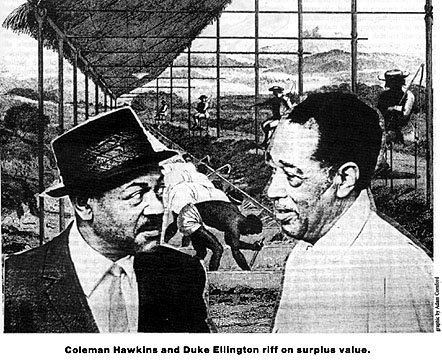 |
| Capitalism, Racism, and Entropy |
liminal perspectives on consensus reality...,
 |
| Capitalism, Racism, and Entropy |
By
CNu
at
September 10, 2014
22
comments
![]()
Labels: American Original , just-us , quorum sensing? , Race and Ethnicity
By
CNu
at
September 10, 2014
0
comments
![]()
Labels: global system of 1% supremacy , niggerization , predatory militarism , wikileaks wednesday
By
CNu
at
September 10, 2014
0
comments
![]()
Labels: just-us , Rule of Law , wikileaks wednesday
By
CNu
at
September 09, 2014
3
comments
![]()
Labels: deceiver , propaganda , Rule of Law
By
CNu
at
September 09, 2014
5
comments
![]()
Labels: predatory militarism , Rule of Law , What IT DO Shawty...
By
CNu
at
September 09, 2014
0
comments
![]()
Labels: predatory militarism , Rule of Law , What IT DO Shawty...
By
CNu
at
September 09, 2014
0
comments
![]()
Labels: individual sovereignty , Rule of Law
…grassy shoulder along Route 24, near the intersection of Routes 24 and 924 in Harford County. (Id. ¶ 22.) The demonstrators stood approximately 20 to 40 feet apart from each other and they held signs of varying sizes, between 4 and 5 feet in height and 2 and 3 feet in width that contained pictures and words that conveyed an anti-abortion message.
By
CNu
at
September 09, 2014
0
comments
![]()
Labels: individual sovereignty , Rule of Law
By
CNu
at
September 08, 2014
17
comments
![]()
Labels: weather report , What Now?
By
CNu
at
September 08, 2014
0
comments
![]()
Labels: neuromancy , What IT DO Shawty... , work
By
CNu
at
September 08, 2014
0
comments
![]()
Labels: predatory militarism , psychopathocracy , reality casualties , Rule of Law
By
CNu
at
September 08, 2014
0
comments
![]()
Labels: priceless.... , theoconservatism
By
CNu
at
September 07, 2014
15
comments
![]()
Labels: Collapse Crime , Living Memory , predatory militarism
A study by University of Chicago professor Craig Futterman found that just 19 of 10,149 complaints accusing CPD officers of excessive force, illegal searches, racial abuse, sexual abuse, and false arrests led to a police suspension of a week or more. In more than 85 percent of internal investigations of complaints, the accused officer was never even interviewed, Think Progress reports.
By
CNu
at
September 07, 2014
0
comments
![]()
Labels: Collapse Casualties , Collapse Crime , Race and Ethnicity
Militarization [of police forces is] a troubling trend that’s been on the rise in America’s police departments over the last 25 years.
***
Since the late 1980s, Mr. Chairman, thanks to acts passed by the U.S. Congress, millions of pieces of surplus military equipment have been given to local police departments across the country.
We’re not talking just about computers and office equipment. Military-grade semi-automatic weapons, armored personnel vehicles, tanks, helicopters, airplanes, and all manner of other equipment designed for use on the battlefield is now being used on American streets, against American citizens.
Academic criminologists credit these transfers with the dramatic rise in paramilitary SWAT teams over the last quarter century.
SWAT teams were originally designed to be used in violent, emergency situations like hostage takings, acts of terrorism, or bank robberies. From the late 1960s to the early 1980s, that’s primarily how they were used, and they performed marvelously.
But beginning in the early 1980s, they’ve been increasingly used for routine warrant service in drug cases and other nonviolent crimes. And thanks to the Pentagon transfer programs, there are now a lot more of them.
By
CNu
at
September 07, 2014
0
comments
![]()
Labels: Collapse Crime , predatory militarism
By
CNu
at
September 07, 2014
0
comments
![]()
Labels: Collapse Crime , Livestock Management , niggerization , parasitic , predatory militarism , What IT DO Shawty...
By
CNu
at
September 06, 2014
0
comments
![]()
Labels: scientific morality , Strict Father
By
CNu
at
September 06, 2014
0
comments
![]()
Labels: scientific morality , Strict Father
By
CNu
at
September 05, 2014
1 comments
![]()
Labels: as above-so below , evolution , symbiosis
By
CNu
at
September 05, 2014
0
comments
![]()
Labels: microcosmos , symbiosis , What IT DO Shawty...
Tucker Carlson: "Here's the illusion we fall for time and again. We imagine that evil comes like fully advertised as such, like evi...